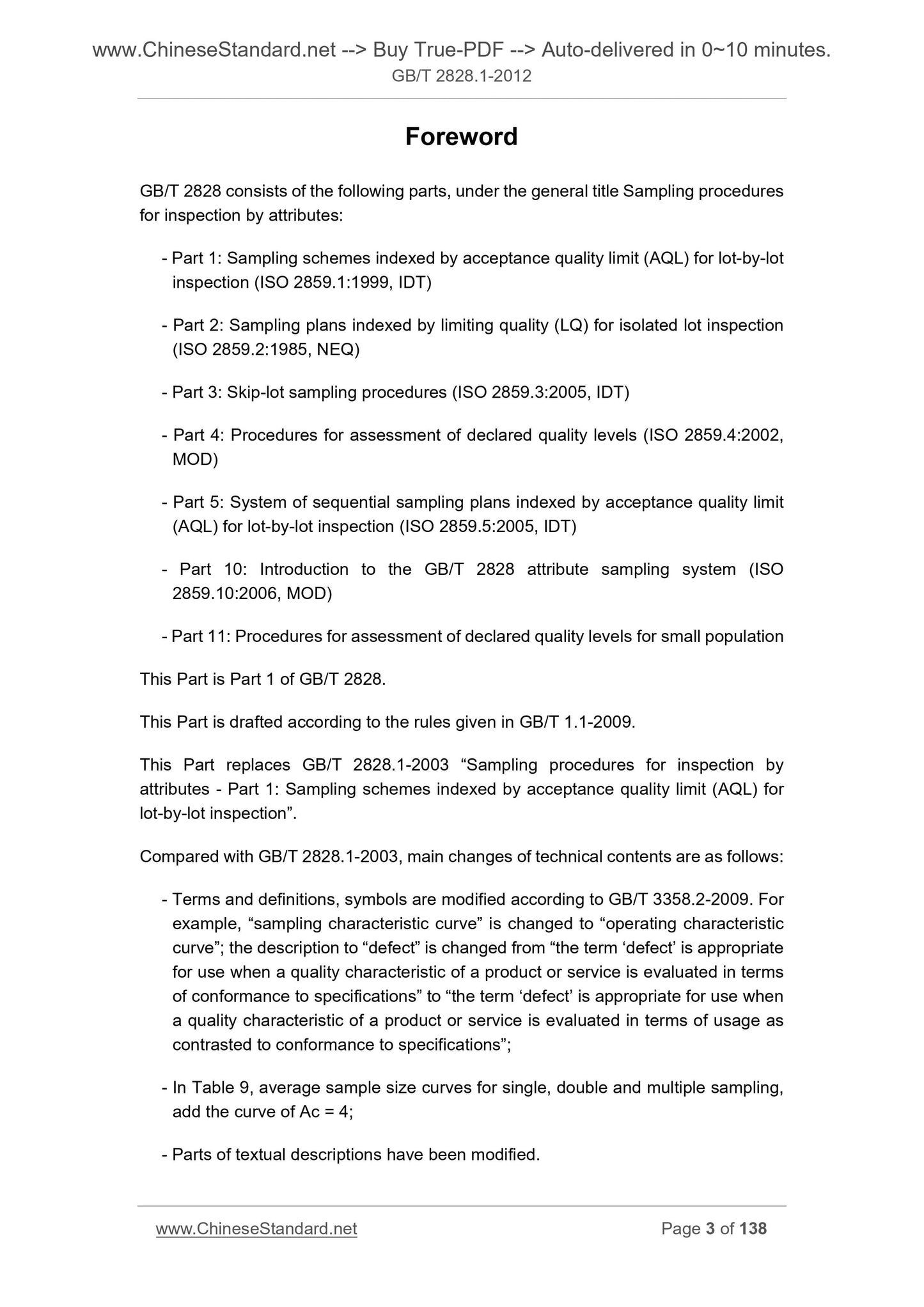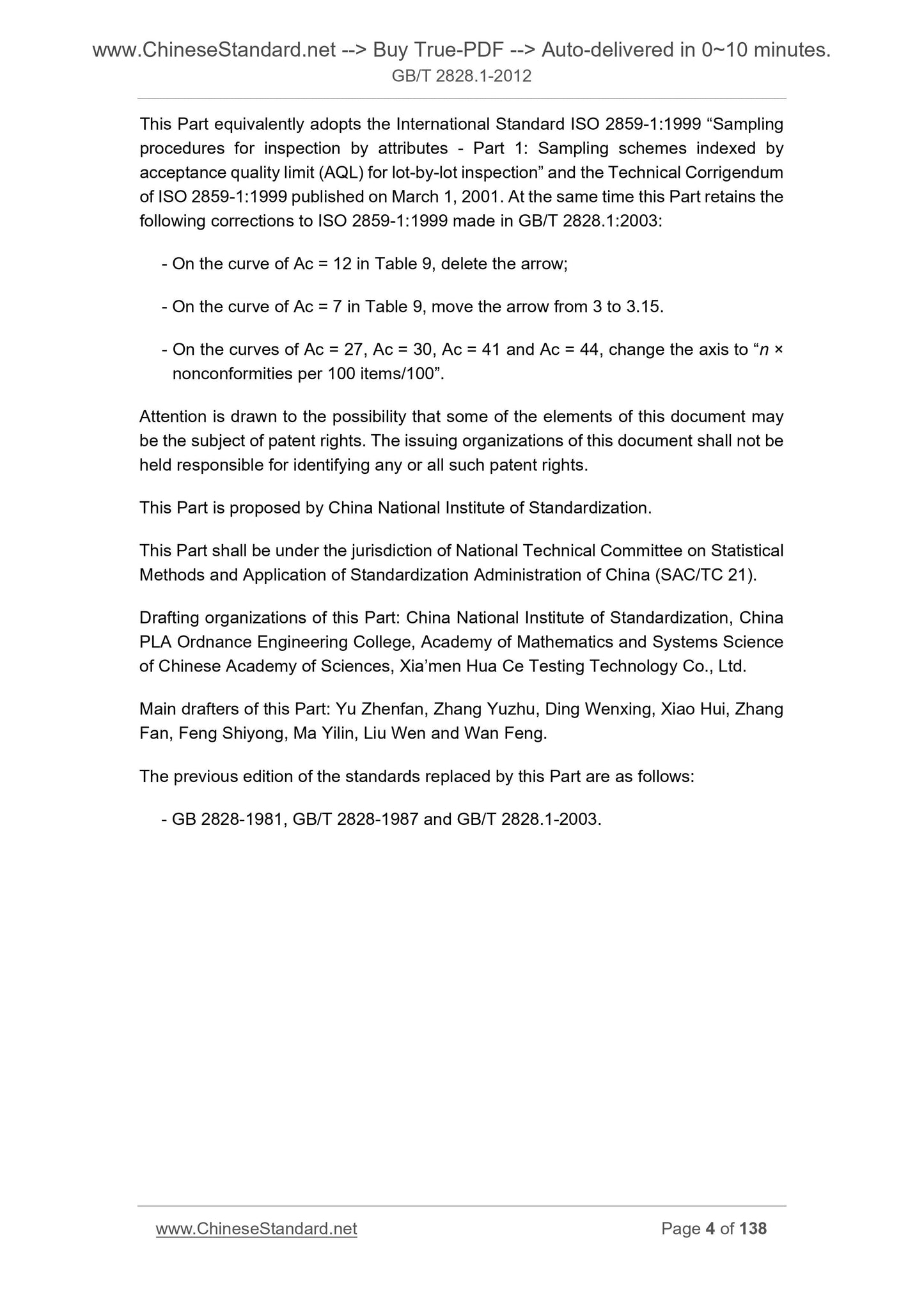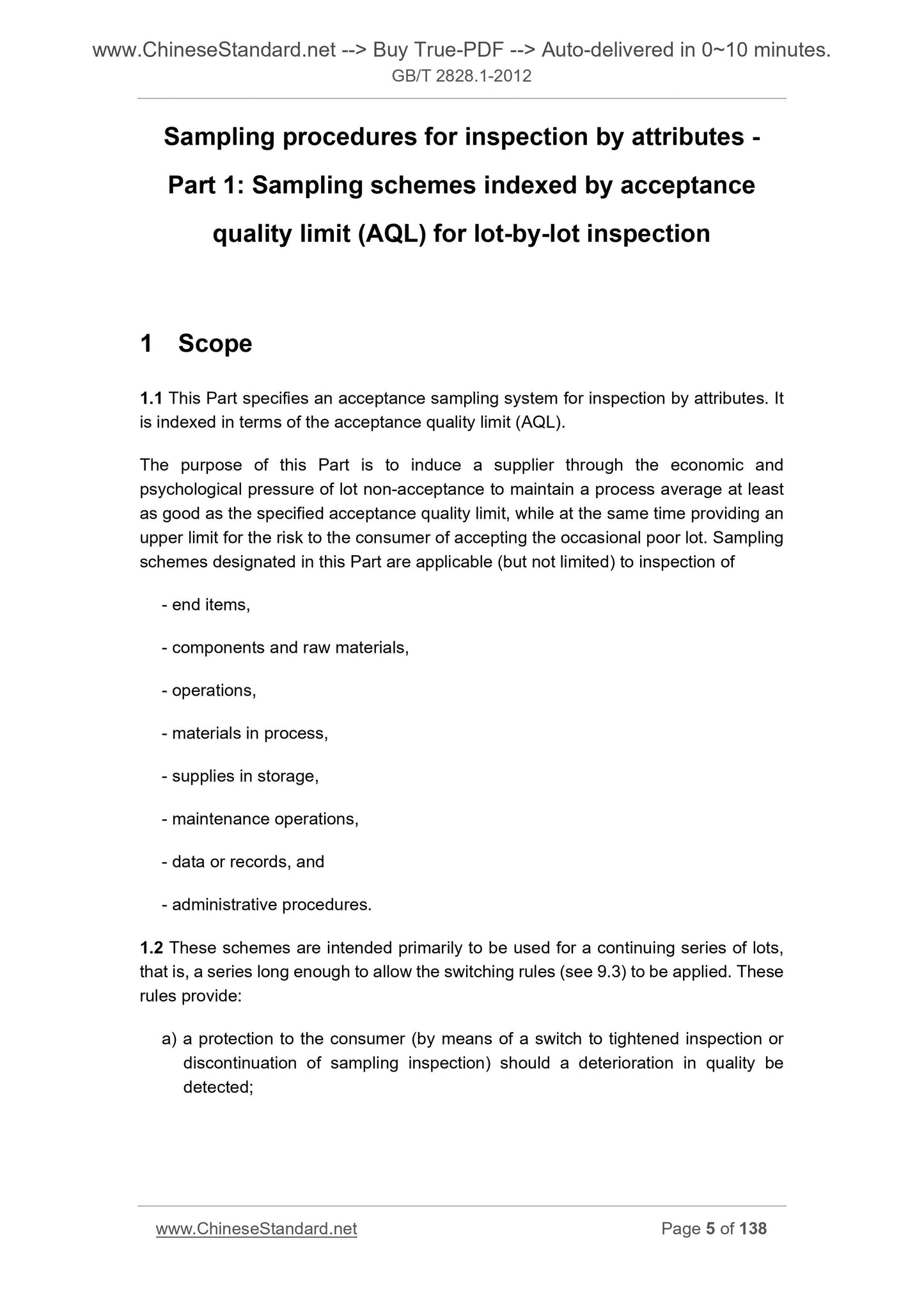1
/
of
6
www.ChineseStandard.us -- Field Test Asia Pte. Ltd.
GB/T 2828.1-2012 English PDF (GB/T2828.1-2012)
GB/T 2828.1-2012 English PDF (GB/T2828.1-2012)
Regular price
$145.00
Regular price
Sale price
$145.00
Unit price
/
per
Shipping calculated at checkout.
Couldn't load pickup availability
GB/T 2828.1-2012: Sampling procedures for inspection by attributes -- Part 1: Sampling schemes indexed by acceptance quality limit (AQL) for lot-by-lot inspection
Delivery: 9 seconds. Download (and Email) true-PDF + Invoice.Get Quotation: Click GB/T 2828.1-2012 (Self-service in 1-minute)
Newer / historical versions: GB/T 2828.1-2012
Preview True-PDF
Scope
1.1 This section specifies a counting sampling inspection system. This section uses the Receive Quality Limit (AQL) to retrieve.The purpose of this section is to induce the supplier to economically and psychologically exert pressure by not accepting the batch, and to promote the process to average the quality of water.
The flat value remains below the specified reception quality limit while providing an upper limit to the probability that the consumer will receive the inferior batch. Specified in this section
The sampling plan can be used for (but not limited to) the following tests.
---Final product;
---Parts and raw materials;
---operating;
--- work in progress;
---Inventory;
---Maintenance operation;
---Data or record;
---Management procedures.
1.2 The sampling plan in this section is primarily applicable to continuous series of batches. The series of consecutive series batches is long enough to allow the use of transfer rules
(see 9.3). These rules are.
a) In the event of deterioration in quality, in order to provide protection to the user, transfer to a tightened test or a suspended sampling test;
b) If the quality has been relatively good, in order to reduce the inspection cost, with the consent of the responsible department, according to the transfer rules, it can be transferred to the relaxation test.
The sampling plan in this section can also be used for the inspection of isolated batches, but in this case, users are strongly advised to carefully analyze the sampling plan.
The operating characteristic curve (see 12.6) determines a sampling plan that gives the desired protection; the user can also refer to GB/T 2828.2-
The sampling plan for the search by limit mass (LQ) given in.2008.
Basic Data
| Standard ID | GB/T 2828.1-2012 (GB/T2828.1-2012) |
| Description (Translated English) | Sampling procedures for inspection by attributes -- Part 1: Sampling schemes indexed by acceptance quality limit (AQL) for lot-by-lot inspection |
| Sector / Industry | National Standard (Recommended) |
| Classification of Chinese Standard | A41 |
| Classification of International Standard | 03.120.30 |
| Word Count Estimation | 87,837 |
| Older Standard (superseded by this standard) | GB/T 2828.1-2003 |
| Quoted Standard | GB/T 2828.2-2008; GB/T 2828.3-2008; GB/T 3358.1-2009; GB/T 3358.2-2009 |
| Adopted Standard | ISO 2859-1-1999, IDT |
| Regulation (derived from) | National Standards Bulletin No. 28 of 2012 |
| Issuing agency(ies) | General Administration of Quality Supervision, Inspection and Quarantine of the People's Republic of China, Standardization Administration of the People's Republic of China |
| Summary | This standard provides a count sampling system. This partly acceptance quality limit (AQL) retrieval. The purpose of this section is to be received through the grant does not make supply-side economic and psychological pressure, prompting the average qual |
Share











